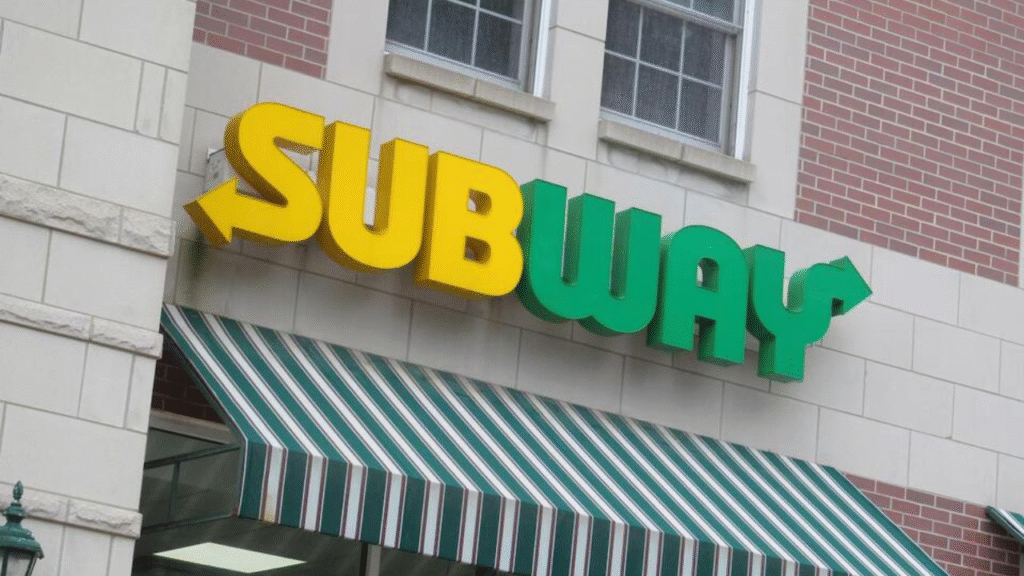In a major development for the restaurant industry, America’s largest sandwich chain, Subway, has recently closed 631 underperforming locations across the United States.
This move, announced in 2024, comes as part of a larger strategy to streamline its operations and combat mounting challenges. With these closures, Subway’s total U.S. store count has dropped to 19,502, a significant dip below the 20,000-mark for the first time in two decades.
This marks the eighth consecutive year of declining store numbers for Subway in the U.S., raising questions about the company’s long-term sustainability in a competitive market.
The closures highlight several factors contributing to the decline, including shifting consumer preferences, increased competition from other sandwich and fast-food chains, and financial struggles faced by individual franchisees.
Understanding Subway’s Struggles
Subway’s decline in store count is a reflection of broader challenges that the company faces in the fast-casual dining sector. Over the years, consumer behavior has been shifting towards healthier eating habits and faster, more convenient food options, something that Subway initially capitalized on but has struggled to maintain in the face of growing competition.
Fast-casual chains like Chipotle, Panera Bread, and Shake Shack, which offer healthier and more contemporary menu items, have gained traction among consumers looking for alternatives to traditional fast food.
These changes in taste, combined with an increase in competition, have made it more difficult for Subway to keep up with the market demands.
Franchisee Struggles and Financial Challenges
Another major issue facing Subway is the financial difficulty of individual franchisees. Franchisee-led businesses are at the heart of Subway’s success, with many store locations being independently owned and operated.
Unfortunately, many of these franchisees have been struggling to stay afloat due to increased operational costs, decreased sales, and the pressures of maintaining competitive prices.
These financial pressures have created a situation where many franchisees have no choice but to shut down their stores. The 631 closures serve as a stark reminder of the ongoing issues that many Subway franchisees face, as the brand works to reevaluate its business model.
Subway’s Position in the Market

Despite these setbacks, Subway remains the largest restaurant chain in the U.S. in terms of location count, with 19,502 stores across the country.
This impressive number still places it ahead of competitors like Starbucks and McDonald’s in terms of the number of outlets. However, this doesn’t tell the whole story.
While Subway has the most locations, its sales have struggled to match the success of competitors that have a more loyal customer base and higher engagement with their products.
Globally, Subway continues to hold the third spot in terms of location count, following behind McDonald’s and Starbucks.
Despite the declining numbers in the U.S., the brand is still a giant in the fast-food world, with thousands of locations in countries around the world. However, the ongoing challenges in the U.S. market will likely require significant changes in strategy for Subway to maintain its dominance.
The Road Ahead for Subway
As Subway moves forward, it will need to adapt to the changing tastes and expectations of its customers.
The company has already begun shifting its focus to improve the customer experience, offering new menu items, revamping store designs, and implementing digital ordering options to make its restaurants more accessible and appealing. Subway is also investing in sustainability efforts to appeal to more environmentally-conscious consumers.
For the franchisees, the future might be uncertain, but Subway’s leadership has pledged to support them through various initiatives designed to address operational challenges. Whether these efforts will be enough to reverse the decline in U.S. locations remains to be seen.
Conclusion
The closing of 631 Subway locations signals a shift in the fast-casual restaurant landscape and reflects the broader issues facing many brands in the industry today.
While Subway still holds the title of the largest sandwich chain in the U.S., it must navigate the challenges of changing consumer preferences, fierce competition, and financial instability at the franchisee level.
The road ahead may be tough, but Subway’s ability to adapt to these changes will determine its place in the future of America’s fast-food industry.



